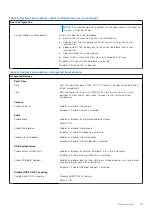
Table 16. System setup options—Pre-boot Behavior menu (continued)
Pre-boot Behavior
USB-C Warnings
Specify the maximum number of characters allowed for Admin password.
Default: 32
Enable Dock Warning Messages
Enable or disable dock warning messages.
Default: ON
Fastboot
Configures the speed of the UEFI boot process.
Default: Thorough. Performs complete hardware and configuration initialization
during boot.
Extend BIOS POST Time
Configures the BIOS POST (Power-On Self-Test) load time.
Default: 0 seconds
Table 17. System setup options—Virtualization Support menu
Virtualization
Intel Virtualization Technology
Enable Intel Virtualization Technology
(VT)
Enables the computer to run a virtual machine monitor (VMM).
Default: ON
VT for Direct I/O
Enable Intel VT for Direct I/O
Enables the computer to perform Virtualization Technology for Direct I/O (VT-
d). VT-d is an Intel method that provides virtualization for memory map I/O.
Default: ON
DMA Protection
Enable Pre-Boot DMA Support
Enables the Pre-boot DMA protection for internal and external ports.
Default: ON
Enable OS Kernel DMA Support
Enables the Kernel DMA protection for internal and external ports.
Default: ON
Table 18. System setup options—Performance menu
Performance
Multi-Core Support
Multiple Atom Cores
Changes the number of CPU cores available to the operating system. The
default value is set to the maximum number of cores.
Default: All Cores
Intel SpeedStep
Enable Intel SpeedStep Technology
Enables or disables the Intel SpeedStep Technology to dynamically adjust
processor voltage and core frequency, decreasing average power consumption
and heat production.
Default: ON
C-States Control
Enable C-State Control
Enables or disables the CPU's ability to enter and exit low-power states.
Default: ON
Enable Adaptive C-States for Discrete
Graphics
Allows to dynamically detect high usage of discrete graphics and adjust system
parameters for higher performance during that time period.
System setup
67










































